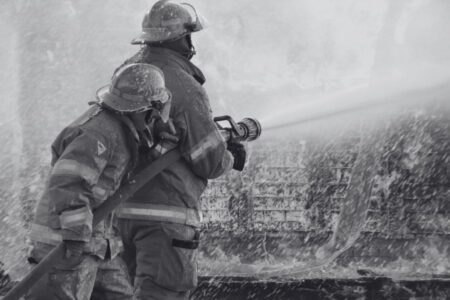Accurate and comprehensive data collection is essential for fire departments, enabling them to make informed decisions regarding incidents and operations. Quality data aids in discerning patterns in response times, and assessing the need for personnel, training, and equipment, and understanding the causes of incidents to prevent future occurrences. Without quality data collection, fire departments risk operating on incomplete information, leading to decisions based on speculation and intuition, rather than solid evidence.
Avoiding Common Data Collection Errors
Data collection can require attention to avoid common errors leading to inaccurate and misleading data. One major pitfall is incomplete or missing incident reports, leaving holes in your records and lacking essential information.
Another frequent error is the incorrect classification of an incident type, which can impact data analysis, presenting a skewed view of the department’s operations and leading to decisions and actions potentially detrimental to the organization.
Furthermore, neglecting to document all personnel involved in an incident can lead to incomplete records that fail to accurately reflect the incident’s scope or the department’s response.
The Value of Narratives in Fire Reporting
Narratives play a critical role in fire reporting, providing a first-hand account that reinforces the raw data. While standard run forms capture basic incident details, narratives offer invaluable context and a fuller picture of the incident. They can contain the sequence of events, specific actions taken by firefighters and other vital information not typically recorded on a form.
Narratives also encapsulate the personal experiences of responders, offering insights into the impact of incidents on personnel. They are instrumental in identifying areas for improvement, revealing gaps or errors in current practices. The use of narratives in fire reporting is essential in ensuring comprehensive information collection, equipping firefighters and emergency responders with the necessary knowledge to operate safely and effectively.
Standardization of Fire Codes and Incident Types
Standardization is vital when dealing with fire codes and incident types. A consistent approach to classification ensures that every department and end-user employs the same criteria for organizing and recording data, leading to a more accurate and comprehensive information database. This standardized data aids decision-makers in making well-informed choices.
The consistent classification system enhances fire prevention and response strategies, benefiting everyone through increased clarity, improved communication and streamlined processes, ultimately contributing to a safer environment.
The Impact of Quality Data Collection on Fire Departments and Communities
Quality data significantly impacts fire departments and the communities they serve. Accurate data tracking allows departments to monitor their performance and identify improvement areas. This information aids departments in making informed decisions about resource allocation, leading to improved safety for firefighters and the community.
Moreover, quality data enables departments to plan effectively for emergencies and potential hazards, improving response times and leading to better outcomes for all. Without quality data, departments may struggle to accurately assess their performance, potentially leading to resource shortages, slower response times and increased risk for firefighters and the community.
For a comprehensive presentation on this topic by Tammy Mills, a former statewide records management system administrator with 14 years of experience at the Mississippi State Fire Marshal’s office, click here.




